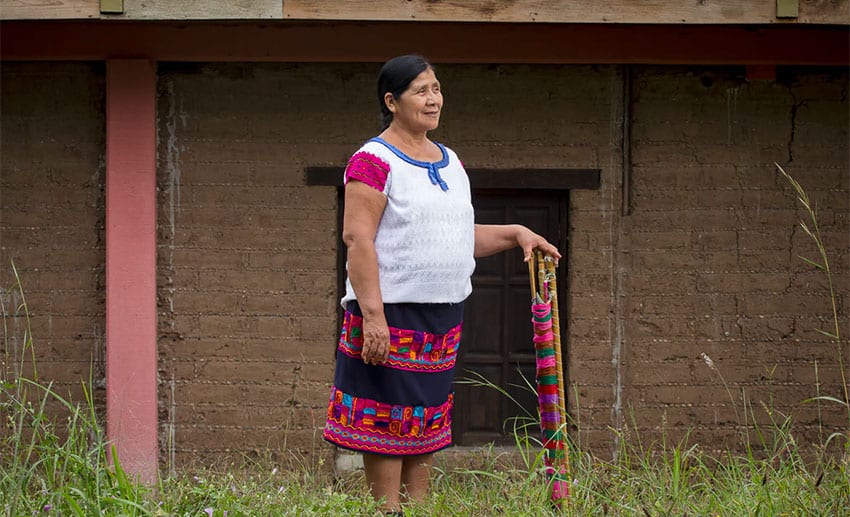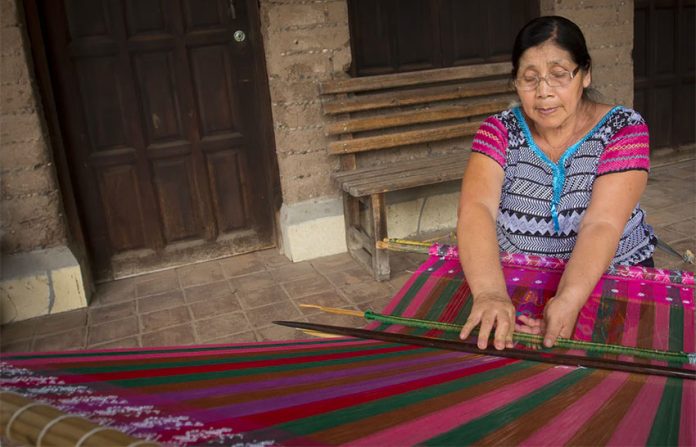A weaver from a rural town in Chiapas has a new award in her collection after being named winner of the National Prize in Arts and Literature, presented to recognize those who have contributed to Mexico’s cultural heritage.
Carmen Vázquez, a Tzotzil Mayan woman from Venustiano Carranza, won the award in the folk arts category for her work in preserving and promoting traditional textile designs and techniques.
Vázquez was born in 1958 in the state’s Tierra Caliente region, several hours from the cities of San Cristóbal de las Casas or Tuxtla Gutiérrez. Villages are surrounded by sugar cane fields and in many ways, life here has not changed much in the 20th century.
The youngest of five children, her upbringing was traditional for the time, speaking only Tzotzil and not permitted to attend school. Instead, she was prepared for chores associated with rural domestic life, which included the making of textiles, in particular weaving on a backstrap loom.
For the most part Vázquez conformed to her community’s expectations, but not entirely. She studied secretly as a child and eventually convinced her family to allow her to attend school. Unlike her sisters, she can speak, read and write Spanish. But much of her time was spent working with her mother, who taught her how to weave on the traditional loom.

At first Vázquez watched then played with the thread and fabric scraps from her mother’s projects. At age 10, she began to learn in earnest. “My mother began teaching me to weave starting with napkins. I began playing with the threads I saw that were not being used, and I watched my mother weave so I could do it.” Much of her work was sold to support the family’s economic needs.
She married early, at 15, becoming the mother of five and eventually the grandmother of six. Over the following decades, Vázquez continued weaving, preserving a number of designs and techniques that others would leave behind.
Her proficiency is such that her pieces are works of art,with intricate weaving and embroidery, and designs reflect the Chismacal, the cosmology of the Tzotzil people. Like many indigenous communities, traditional dress for women has indications that tell where the woman is from. For example, Vázquez explains, women’s blouses in Venustiano Carranza are lighter than those in other communities because the weather is warmer. While some Chiapan communities weave with wool, those in Venustiano Carranza weave exclusively with cotton.
Over the years, she has perfected the making of linens, along with blouses, rebozos (a kind of shawl) and men’s shirts and pants. Some of these garments require working with very fine threads and most take months to make.
Vázquez won her first award the year she married and it was followed by many others at both the state and national level. The most important of these was the National Grand Prize in Handcrafts, sponsored by one of Mexico’s most important collections of folk art, the Fomento Cultural Banamex. It has brought the work of her Tzotzil community to national attention.
About 14 years ago, Vázquez began actively promoting and teaching traditional weaving to the younger generations in Venustiano Carranza. She is also one of the founders and the current president of the Cooperativa Jolobiletik Jun Ya’el, which makes and sells the work of 10 women in the community. In addition to all this, she still weaves with her sisters.
Despite their cultural and historic importance, handwoven garments are in danger of disappearing. They are time and labor-intensive and have to compete with the importation of copies. Many weavers in the area have stopped working or have abandoned more difficult techniques such as brocade, which Vázquez and her sisters are working to keep alive.
Says Juana Solano Espinosa, another weaver from Venustiano Carranza: “We plan to keep teaching . . . We hope to keep teaching the children so that they continue to keep our work alive; continue to make a living from handcrafts since this work is unique. Outside of Carranza no one does it anymore.”
Source: EFE (sp)
